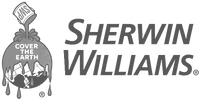Formulation Material Selection
Optimize Pigment Dispersion: Real-World Tips for Stable, High-Quality Formulations
Language: English
Length: 90 min
Recorded on: 27 May 25
Package Includes
6 months access to Course Recording, Presentation Slides, Q&A Transcript
Course Description
Say goodbye to your pigment dispersion & stabilization issues by applying proven time-savers & pragmatic procedures in daily practice.
Jochum Beetsma will help you avoid unfocused trails with guidance on how to:
Jochum Beetsma will help you avoid unfocused trails with guidance on how to:
- Read Technical Data Sheets better to ease ingredient selection
- Select additives as per pigment & define the optimal dispersant amount needed
- Deduce the best formulation strategy with real examples (TiO2, carbon black…)
- Check pigment dispersion quality & stability in practice

Jochum Beetsma
0 courses
See Tutor Profile
Participants of this course includes




Why should you view this course?
Who should join this course?
-
This course is suitable for advanced level proficiency
Advanced
Course Outline
Share this Course
Share this Course
https://courses.specialchem.com/products/pigment-dispersion-stabilization-optimization-tips-with-practical-examples

